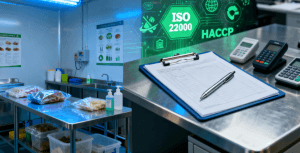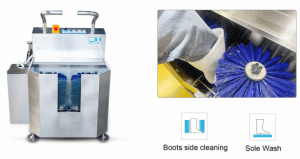Mold contamination is a major cause of spoilage in the food processing industry, affecting food quality, safety, and brand reputation. Understanding mold sources and implementing effective prevention strategies is critical for maintaining product safety and extending shelf life.
Why Mold Contamination Matters
- Nutritional Loss: Mold growth reduces the nutritional value of processed foods.
- Toxin Production: Certain molds produce harmful mycotoxins that can cause food poisoning, including nausea, vomiting, diarrhea, and in severe cases, may be carcinogenic.
- Flavor and Appearance Changes:Mold alters the color, smell, and taste of food, impacting consumer perception.
- Brand Reputation: Mold contamination can lead to consumer distrust, negative reviews, and decreased sales.
Main Causes of Mold Contamination in Food Processing
- Raw Material Mold Contamination
Raw materials such as grains, powders, water, and sugar may contain mold. Improper handling can allow mold to survive processing and proliferate during storage.
- Cross-Contamination from Unclean Equipment
Incomplete cleaning of production tools, machinery, and containers may leave mold spores. Cross-contact between different products can also spread contamination. Staff hygiene is a key factor.
- High Humidity and Moisture
Mold thrives in environments with 85–90% relative humidity. Food processing often generates steam, leading to wall condensation and damp surfaces.
- Airborne Mold Spores
Poor ventilation increases the risk of mold proliferation. Airborne spores can settle on food surfaces, causing secondary contamination. Regular monitoring of air quality is essential.
- Improper Cooling and Packaging Control
Even after heat treatment, if cooling and packaging areas are not strictly controlled as clean zones, mold can recontaminate products. Monitoring air microbial levels and maintaining strict sanitation is essential.
Mold Prevention Strategies for Food Processing Factories
- Follow International Food Safety Standards
Implement procedures according to Codex Alimentarius and other recognized international standards to ensure consistent safety and quality.
- Sedimentation Monitoring and Regular Cleaning
Airborne Mold Monitoring: Conduct routine checks in cooling, packaging, and storage areas to assess mold risk.
Cleaning and Disinfection: Clean floors, walls, machinery, and equipment thoroughly after each production cycle. Use food-grade disinfectants for full sanitation.
- Regular Monitoring and Sanitizing of Ventilation Systems
Check filters, ducts, and air vents for mold growth. Use professional instruments to monitor mold spores in the air and disinfect ventilation systems regularly.
- Raw Material Microbial Control
Test raw materials for microbial contamination before use.
Store materials in dry, well-ventilated conditions.
Follow First-In, First-Out (FIFO) principles to avoid prolonged storage.
- Food Contact Surface Sampling and Monitoring
Regularly sample machinery surfaces, conveyors, containers, and staff hygiene points.
Adjust monitoring frequency based on contamination levels and environmental conditions.
- Internal Control – Use of Food Preservatives
Approved preservatives can extend shelf life, prevent spoilage, reduce food waste, and ensure product safety. Commonly used preservatives include:
Propionic acid and its salts (sodium, calcium)
Sorbic acid and its salts (potassium)
Nisin and ε-Polylysine
- External Control – Food Preservation Products
External preservation solutions help maintain product quality, extend shelf life, and ensure food safety during storage and transportation.
Maintaining a mold-free food processing environment requires strict hygiene, monitoring, and preventive measures. By following international food safety standards, food processors can ensure safe, high-quality products for consumers and maintain brand reputation.
Sources:Food Quality Management, TopWone Food Biotechnology




